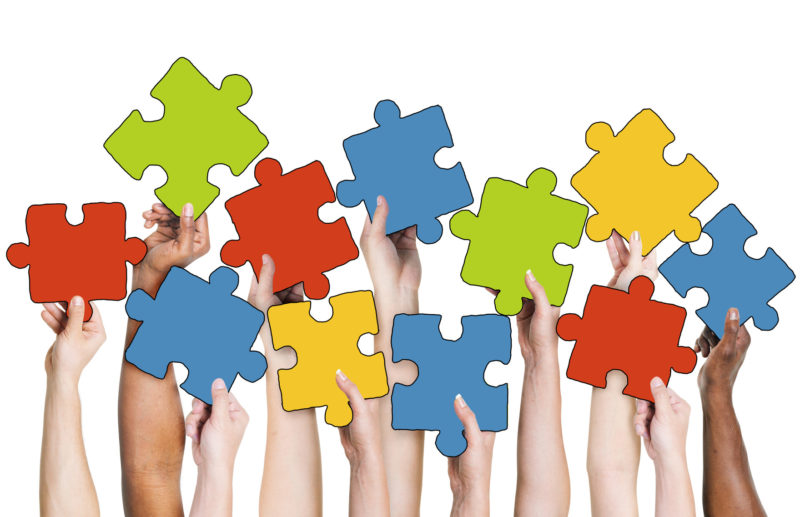Jigsaws are a great way to foster critical thinking, collaboration, communication, and creativity skills in the classroom. Jigsaws are also excellent for differentiating instruction to meet the needs of diverse learners. Check out these tips for using jigsaws to meet the needs of all your learners.
Students from Culturally Diverse Backgrounds
- Introduce multicultural authors and texts through jigsaw activities. When students see themselves represented in classroom resources, learning becomes more meaningful and engagement increases.
- Assign non-traditional jigsaw projects, like an oral history project or music and dance performance, to emphasize the importance of learning about diverse perspectives and cultures.
English Language Learners (ELLs)
- Develop ELLs’ comprehension by having them independently engage with texts prior to the jigsaw. By the time they get into their expert groups, ELLs will have a better grasp of the topic and will be able to discuss the content with more confidence.
- Provide ELLs with additional written, visual, or audio content (e.g., a glossary, a video from a similar perspective with English subtitles, or an audio recording of the text). This supplementary content will scaffold ELLs’ comprehension of the texts and clarify points of confusion.
- Circulate the classroom during jigsaws to monitor comprehension levels and rephrase instructions or content as needed.
Students with Special Needs
- Ask students with special needs to organize their ideas on graphic organizers as they engage with texts.
- Encourage students to use different colored highlighters to annotate their texts based on different criteria, or record their notes through talking text technology.
- Organize mixed-ability cooperative learning groups. Students with special needs will have an opportunity to share and explore their ideas with peers who may have more advanced skills or perceive the content differently.
Gifted and Talented Students
- Use texts of greater complexity with students who are gifted and talented, or have them research and choose their own texts.
- Ask gifted and talented students to use a variety of sources (e.g., primary, secondary, visual, oral, and written) in their jigsaw research to form their own perspective on the topic (CCSS ELA standard).
- Assign your gifted students the role of “group leader” for the synthesis component of the jigsaw activity. The group leader can be responsible for keeping track of activity checklists, facilitating group discussion, and/or reporting group work back to the class.
To learn more about using the jigsaw technique to support your classroom of diverse learners, watch this video.







